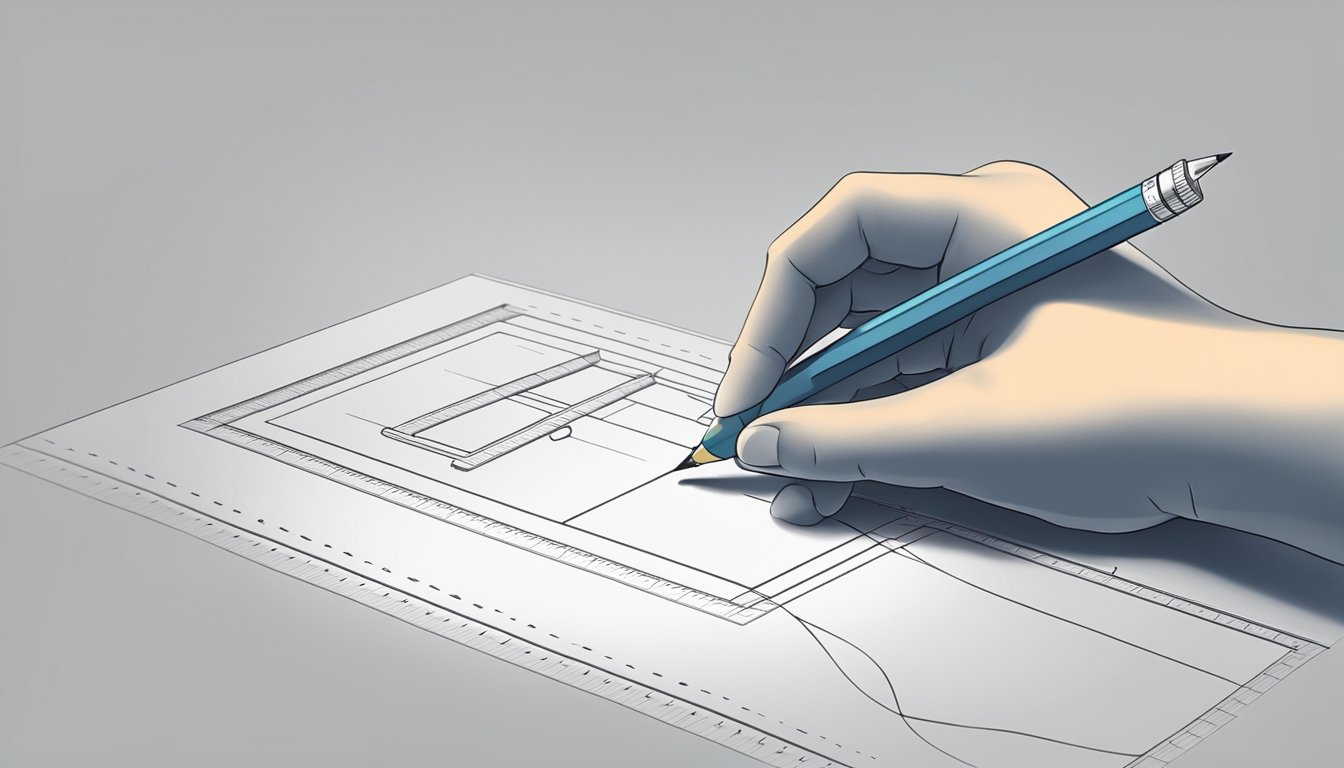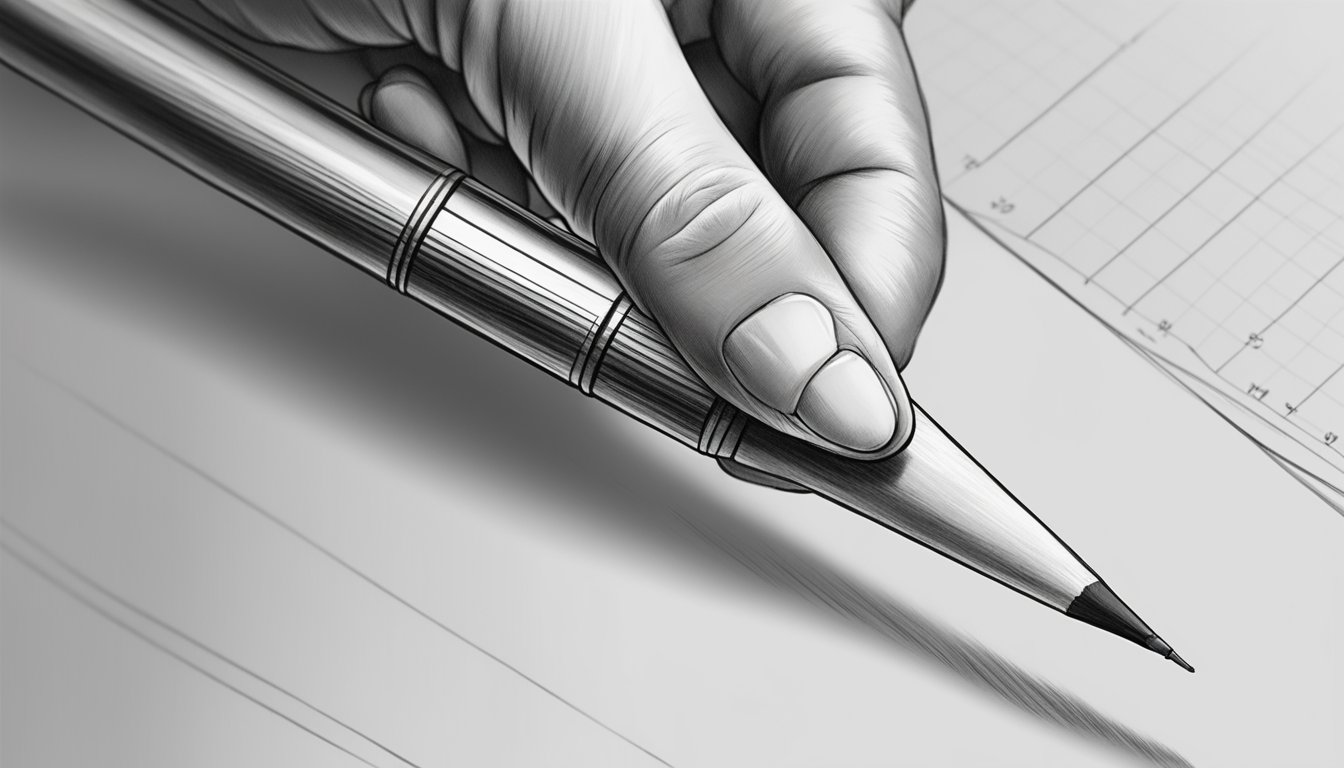If you’re looking to improve your golf game, mastering the perfect draw is a great place to start. A draw is a shot that curves from right to left for right-handed players and left to right for left-handed players. This shot can add distance to your drives and give you more control over your shots. In this article, we’ll walk you through the steps to play the perfect draw and provide additional tips and tricks to improve your drawing skills.
To play the perfect draw, you’ll need to understand the perfect circle game. This game involves drawing a circle around your ball and focusing on hitting the ball so that it starts to the right of the circle and curves back to the center. This game can help you visualize and execute the perfect draw shot. We’ll explain the perfect circle game in more detail later in the article.
Getting started with playing the perfect draw involves proper alignment of your feet, hips, and shoulders. We’ll walk you through the steps to align yourself correctly and provide additional tips to help you improve your drawing skills. By the end of this article, you’ll have a better understanding of how to play the perfect draw and be on your way to improving your golf game.
Key Takeaways
- Mastering the perfect draw can add distance and control to your golf game.
- Understanding the perfect circle game is key to playing the perfect draw.
- Proper alignment and additional tips and tricks can improve your drawing skills.
Understanding the Perfect Circle Game
https://www.youtube.com/watch?v=c_rELfO4GdY&embed=true
If you’re looking for a fun way to improve your drawing skills, you might want to try playing the Perfect Circle Game. This online game has been taking the internet by storm, thanks to its simple yet addictive gameplay.
The Perfect Circle Game was created by Vole WTF and Neal, and it has quickly become a viral sensation. You can find it by searching for #circlegame on social media platforms like Twitter or Instagram.
The objective of the game is straightforward: draw a perfect circle as accurately as possible. The game will measure how close you get to drawing a perfect circle, and you can keep playing to try and beat your score.
To play the Perfect Circle Game, all you need is a computer or smartphone with an internet connection. Simply visit the game’s website and start drawing circles. The game is free to play, and you don’t need to download anything.
One of the best things about the Perfect Circle Game is that it’s suitable for all ages. Whether you’re a beginner or an experienced artist, you can enjoy playing this game and improving your skills.
So why not give the Perfect Circle Game a try? It’s a fun way to pass the time and perfect your circle-drawing abilities.
Getting Started: How to Play
Setting Up the Game
To play the perfect draw, you’ll need to set up the game first. Start by selecting a golf club that you are comfortable with. Next, align your body to the target and aim the clubface slightly to the right of the target. This will help you create the right swing path to hit a draw.
Once you have aligned yourself, take your normal stance and grip the club. Make sure your grip is not too tight or too loose. A comfortable grip will help you swing the club smoothly. Remember to keep your shoulders relaxed and your body loose.
Scoring and Winning
To score in golf, you need to get the ball into the hole in as few strokes as possible. In the perfect draw, you’ll need to hit the ball with a slight right-to-left curve. This will help you avoid obstacles and get closer to the green.
To win the game, you’ll need to have the highest score. This can be achieved by hitting the ball accurately and consistently. Keep practicing your swing and aim for a high percentage of accurate shots.
Remember, golf is a game of skill and patience. Don’t get discouraged if you don’t get it right the first time. Keep practicing and you’ll soon be hitting the perfect draw like a pro!
Improving Your Drawing Skills
https://www.youtube.com/watch?v=PVMI51MHlys&embed=true
If you’re looking to improve your drawing skills, there are a few things you can do to help you master the perfect draw. Here are some tips to help you get started:
Mastering the Perfect Circle
Drawing a perfect circle can be challenging, but with a little practice, you can master this fundamental shape. One way to practice drawing circles is to use a compass or a circular object to trace around. This will help you get a feel for the shape and the movement of your hand.
Another way to practice drawing circles is to use a reference image and trace it. This can help you understand the proportions and the curves of a circle. Once you’ve traced a few circles, try drawing them freehand. This will help you develop your muscle memory and improve your hand-eye coordination.
Using a Stylus Pen
If you’re looking to take your drawing skills to the next level, consider using a stylus pen. A stylus pen can help you draw more accurately and with greater precision. It can also help you create smoother lines and more detailed drawings.
When choosing a stylus pen, look for one that is comfortable to hold and has a fine tip. This will help you create precise lines and make detailed drawings. You may also want to consider a stylus pen that has pressure sensitivity, which can help you create drawings that have more depth and texture.
Improving your drawing skills takes time and practice, but with these tips, you can start to develop your skills and create drawings that you’re proud of. Remember to be patient with yourself and to keep practicing. With time and dedication, you’ll be able to draw a perfect circle and create beautiful drawings that showcase your skills.

Engaging with the Community
« Best Amazon Basics Golf Bags: Affordable and High-Quality Options
Best Adams Hybrids for Your Golf Game »
https://www.youtube.com/watch?v=mtrYa-N4eZg&embed=true
Playing the perfect draw is not just about having fun and passing the time. It’s also about engaging with your community and building connections with other players. One great way to do this is by sharing your high scores and gameplay on social media platforms like TikTok. By doing this, you can connect with other players who share your interests and get tips and advice on how to improve your gameplay.
Another way to engage with the community is by participating in online forums and discussion boards. These forums are a great way to connect with other players, share tips and strategies, and get advice on how to improve your gameplay. You can also participate in online tournaments and competitions, which are a fun way to test your skills and compete against other players from around the world.
Playing the perfect draw is also a great way to pass the time and have fun. Whether you’re playing alone or with friends, it’s a game that is easy to learn and provides hours of entertainment. You can also customize the game to your liking by changing the difficulty level, the number of players, and the rules of the game.
In summary, playing the perfect draw is not just about having fun, it’s also about engaging with the community and building connections with other players. By sharing your high scores on social media, participating in online forums, and competing in tournaments, you can connect with other players who share your interests and get tips and advice on how to improve your gameplay. So what are you waiting for? Grab your friends and start playing the perfect draw today!

Additional Tips and Tricks
https://www.youtube.com/watch?v=49vqPJlGTnY&embed=true
Playing the perfect draw takes practice and patience, but there are a few additional tips and tricks that can help improve your game. Here are some things to keep in mind:
-
Challenge yourself: Don’t be afraid to challenge yourself by playing against opponents who are better than you. This will help you improve your skills and learn new strategies.
-
Use a good mouse: A good mouse can make all the difference when playing the perfect draw. Look for a mouse that is comfortable to use and has a high DPI (dots per inch) for better accuracy.
-
Master the dot: The dot is an important part of playing the perfect draw. Practice drawing dots of different sizes and shapes to improve your accuracy and control.
-
Stay focused: It’s important to stay focused when playing the perfect draw. Avoid distractions and stay in the zone by taking deep breaths and focusing on your game.
-
Experiment with different grips: Experiment with different grips to find the one that works best for you. Some players prefer a loose grip, while others prefer a tighter grip for better control.
-
Practice, practice, practice: The more you practice, the better you will become at playing the perfect draw. Set aside time each day to practice and try new techniques to improve your game.
Remember, playing the perfect draw is all about practice and patience. Use these tips and tricks to help improve your game and take your skills to the next level.
Frequently Asked Questions
https://www.youtube.com/watch?v=U1kPk0V-FzQ&embed=true
How can I consistently hit a draw with my irons?
To consistently hit a draw with your irons, you need to make sure that your swing path is coming from the inside. This means that your club should be coming from behind you and swinging out towards the ball. You should also make sure to rotate your forearms through impact, which will help the clubface close and produce a draw. Practicing this technique regularly will help you to hit a draw more consistently.

How should I position my feet to hit a draw?
To hit a draw, you should position your feet slightly closed to your target line. This means that your front foot should be slightly closer to the target than your back foot. This will help to encourage an inside-to-out swing path and promote a draw. Make sure to experiment with your foot positioning to find what works best for you.
What is the technique for hitting a draw with a golf ball?
The technique for hitting a draw with a golf ball involves swinging from the inside and rotating your forearms through impact. This will help to close the clubface and produce a draw. You should also make sure to position your feet slightly closed to your target line. Practicing this technique regularly will help you to hit a draw more consistently.
How can left-handed golfers hit a draw?
Left-handed golfers can hit a draw by following the same technique as right-handed golfers. This involves swinging from the inside and rotating your forearms through impact. You should also position your feet slightly closed to your target line. Practicing this technique regularly will help you to hit a draw more consistently.
How do I line up to hit a draw?
To line up to hit a draw, you should aim your body slightly to the right of your target. This will help to encourage an inside-to-out swing path and promote a draw. You should also position your feet slightly closed to your target line. Make sure to experiment with your alignment to find what works best for you.
What is the difference between hitting a fade and a draw with irons?
The difference between hitting a fade and a draw with irons is the direction that the ball curves. A draw curves from right to left (for a right-handed golfer), while a fade curves from left to right. The technique for hitting a fade is the opposite of hitting a draw. You should swing slightly outside-to-in and rotate your forearms through impact to produce a fade.









